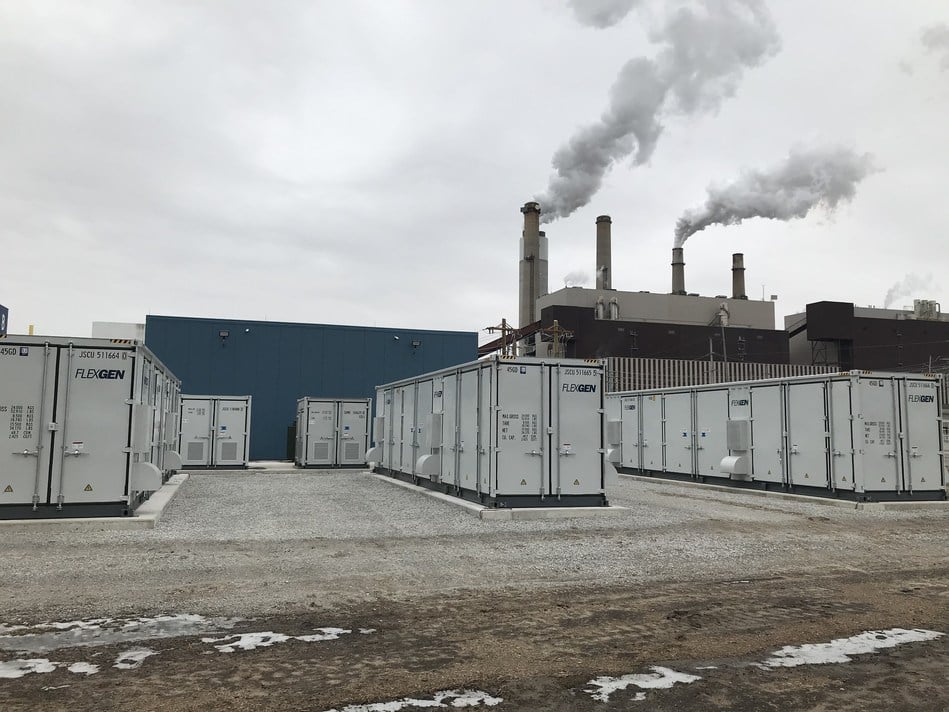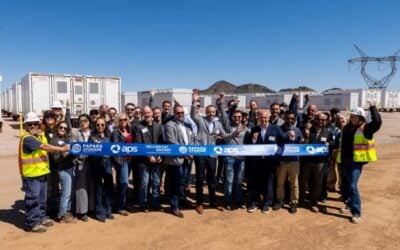
The US Midcontinent Independent System Operator (MISO) has included electricity storage into its market portfolio for the first time.
MISO is responsible for overseeing the electrical grid and associated wholesale markets – in other words generation and transmission of high-voltage electricity – across all or part of 15 states of the US and the Canadian province of Manitoba.
Enjoy 12 months of exclusive analysis
- Regular insight and analysis of the industry’s biggest developments
- In-depth interviews with the industry’s leading figures
- Annual digital subscription to the PV Tech Power journal
- Discounts on Solar Media’s portfolio of events, in-person and virtual
The regional transmission organisation (RTO) and independent system operator (ISO) began including energy storage into the market resource mix for the first time at the start of this month, making an official announcement on Tuesday (6 September).
Energy storage is a resource that can support resilience and reliability of the grid as MISO transitions to remove fossil fuel generation from the grid and replace it with cleaner resources like wind and solar PV, the grid operator said.
“We are excited to see this space grow with increasing member interest and participation, particularly as we continue to adapt to the accelerating resource transition. With the introduction of Electric Storage Resources to our market portfolio, we will continue to position MISO’s grid and its members for the ‘Grid of The Future’,” MISO executive director for system operations Jessica Lucas said.
Electricity storage will now be able to participate in MISO Energy and Operating Reserves Market as supply and demand resources.
While none of the regions covered by MISO are particularly known for their adoption of energy storage to date, some companies active in the US battery storage market have spoken to Energy-Storage.news about the strong potential they see for the technology in the regions it covers.
For instance, in a 2021 interview with this site, Jeff Bishop, CEO of energy storage developer Key Capture Energy and his colleague Taylor Quarles mentioned the MISO region as one of the exciting up and coming markets in the US.
Quarles said the company had 600MW of projects in development in MISO at the time of the interview. Bishop explained that MISO territory does not have shale gas reserves under the ground for the most part, unlike another large grid territory, PJM Interconnection.
With MISO’s covered states including states like Arkansas, Indiana and the Dakotas, the market has historically been a coal-based one, along with some nuclear generation. Those are baseload sources of energy that can’t ramp up and ramp down quickly, meaning that as more wind and solar PV come onto the system, the system can’t be balanced by burning natural gas as happens in parts of PJM.
In contrast, electricity storage resources can quickly respond to grid signals that call for injection of power to the grid or withdrawal of power as they charge or discharge respectively. That means storage can be effective in reducing peak demand, managing grid congestion or providing backup power in the event of major disruptions.
Of course, coal is being retired across pretty much all US states for economic, environmental and climate-related reasons, including those in MISO, which leaves a big opportunity for batteries to fill in the capacity gaps alongside renewable energy.
Changing MISO price signals
Also in 2021, Sam Huntington, an analyst at IHS Markit, told the site that traditionally coal-focused regions of the grid in the US Midwest – where much of MISO sits – were already then seeing a lot of planned activity from utilities and developers to deploy grid-scale energy storage.
That was partly due to coal retirements, but also very much to do with the improving economics for energy storage and solar-plus-storage technologies. Huntington noted however that with much of the Midwest “oversupplied” with energy capacity, activity might not take off until coal retirements really took hold throughout this decade.
At that time, this oversupply meant MISO had not implemented strong price signals for firm energy resources, such as four-hour duration battery storage systems.
That is now changing. In April, Energy-Storage.news reported for example that a 131MW, four-hour duration (524MWh) battery energy storage system (BESS) project had been proposed by developer Open Road Renewables in Indiana.
Open Road Renewables president Cyrus Tashakkori said that MISO capacity auctions for 2022-2023 had revealed an 8GW shortfall in capacity resources in the transmission area’s central region. This led to high clearing prices for resources that ensure grid reliability, leading to the developer and others proposing large-scale battery projects to solve those reliability issues.
MISO has adopted the Federal Energy Regulatory Commission (FERC) definition of electric storage resources (ESRs): “…a resource capable of receiving electric energy from the grid and storing it for later injection of electricity back to the grid regardless of where the resource is located on the electrical system”.
That includes non-battery technologies too, like pumped hydro energy storage or compressed air. MISO noted that in the current state of play, with limited storage resources active on the system, the impact of changes will be limited.
However, in light of the increasing penetration of renewables and higher adoption of distributed energy resources (DERs), the changes position the system operator well to handle increased deployment and participation of energy storage in its service area in the coming decade.






